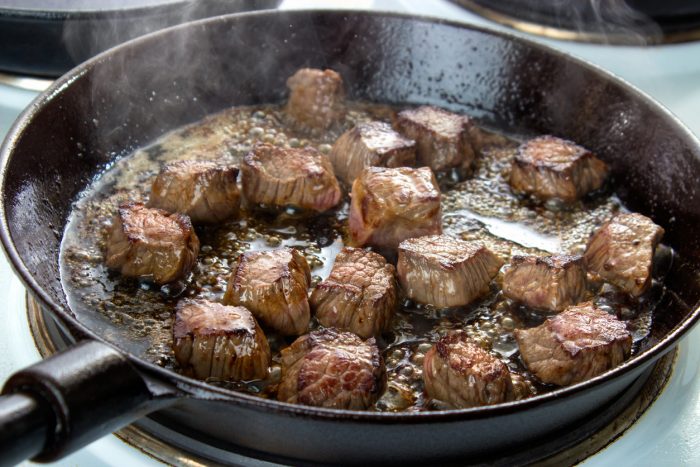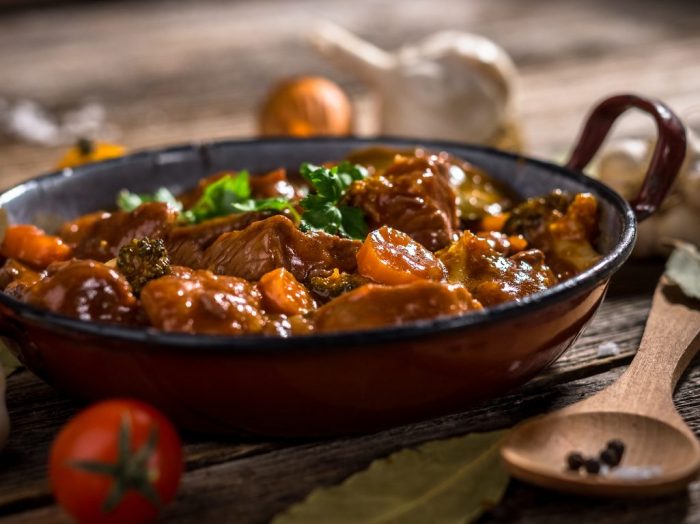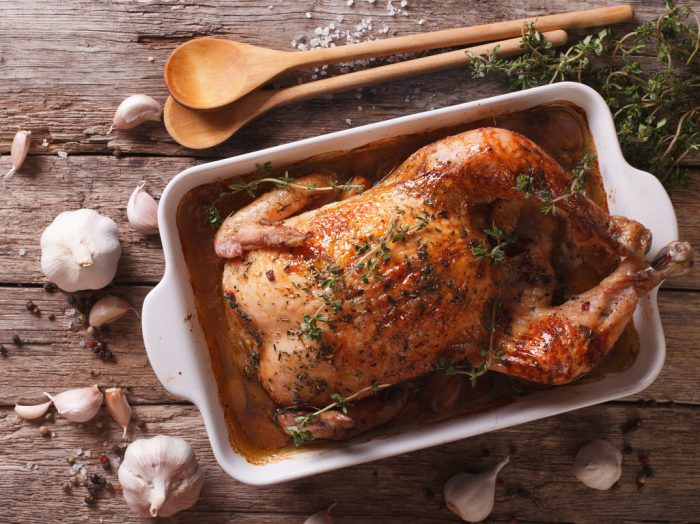Cooking is about passion, experience, and technique. Some of the things you learn by doing and others you can read in order to improve your process. So here are some beef stew mistakes you might be making. Avoid them the next time.
It seems easy enough, making a beef stew. But what if you could improve your work? Sometimes it’s not enough to do the prepping and the simmering. Some of the details matter a little more than others. And those are the ones you should be paying attention to. So, without much ado, here are the beef stew mistakes you should avoid, for a juicy and flavorful result that just melts in your mouth.
Avoid these 5 beef stew mistakes
1. Using the wrong cut of meat
Stew meat sold under this moniker can be unreliable. I mean, you don’t know exactly what cut it is in its packaging and it’s not your best option for stew. You might ask: what is the best option then? The answer is beef chuck. While it’s really not the way to go for grilling, beef chuck is perfect for a stew. The simmering tends to melt the tough joints in this cut of meat and it all works wonderfully.
2. Using water as braising liquid
You want your beef stew to be as flavorful and juicy as possible. And if there’s one thing water is known for, that might be its utter lack of flavor. So why use an ingredient that brings nothing to the table? Go, instead, for beef stock, if you can, which will make your experience and flavor profile so much richer. Or choose beef broth. You can find out the difference between the two here.
Another option is using bouillon paste. It will also add richness and plenty of flavor to your stew ingredients. Don’t dilute with water, unless you’re in a pinch.

3. Not browning the meat
It’s not enough to just add the beef chuck to the liquid and then let it simmer. You should avoid this common beef stew mistake by searing the beef first. So dice it and then add it to a pan with some grease. The smokiness of the searing process will bring so much more flavor to your beef stew.
4. Adding a thickening agent
A lot of people say that you should add as much thickness to your stew as possible. But do you really need to add something like roux? Not roux-lly. I apologize for this bad pun. If you use large chunks of meat and vegetables like potatoes, onions and so on, you stew will be thick enough. Not to mention that the flavor will be more than enough to indulge in. It will be thicker than soup, which is in fact what you should go for.
5. Serving it immediately
Sure, a stew is pretty decent when it’s just cooked, but it gets so much better the next day, once the flavors have settled. It seems to just get richer and more complex in flavor. So if you have the opportunity and time and patience to make it the day before you plan on eating, you will definitely be happy that you did. Things only get better after that. Oh and because of that, you should probably consider making a bigger batch.






